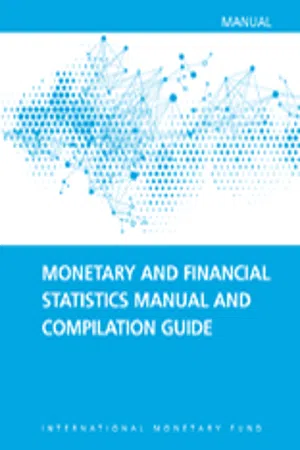Economics
Four Types of Credit Market Instruments
The four types of credit market instruments are bonds, loans, mortgages, and asset-backed securities. Bonds are debt securities issued by governments or corporations, while loans are agreements between a lender and a borrower. Mortgages are loans secured by real estate, and asset-backed securities are financial instruments backed by a pool of assets such as loans or receivables.
Written by Perlego with AI-assistance
Related key terms
Related key terms
1 of 4
Related key terms
1 of 3
4 Key excerpts on "Four Types of Credit Market Instruments"
- eBook - ePub
Private Capital Investing
The Handbook of Private Debt and Private Equity
- Roberto Ippolito(Author)
- 2019(Publication Date)
- Wiley(Publisher)
Companies can choose amongst different debt instruments, depending on the particular need. That need should first be identified. The choices of instrument may also be specific to the market where funds are being raised. In the US, banks are not significant lenders; rather they package loans, keep a part, and sell most of it to long-term investors such as insurance companies or mutual or pension funds. In Europe or Asia, banks still play an important role in lending, but they are beginning to sell a small proportion of these loans to institutional investors. Some of the credit risks that are inherent in the debt instruments used by companies are not linked to the firm's performance, but rely on what type of instrument is used, how the different debt instruments compare with one another, and the terms and conditions determining the relationship between borrower and creditor. Other risks of debt instruments are related to the company's ability to generate cash flows when it comes to evaluating the prospects of recovery for each debt instrument in insolvency.Bank products
The most common debt instruments offered by banks are bank loans: these are loans provided by commercial banks on a bilateral basis or with a group of banks (syndicate). Depending on their role in the syndicate, the syndicate members will claim different roles and level of fees (lead-arranger, arranger, co-arranger, lead manager, senior manager, manager). They are extremely flexible and can be provided for different maturities with differing drawdown and repayment profiles. Traditional commercial banking lending products (see Table 2.1 ) include:- Short-term loans: with a maturity below one year, secured or unsecured, their primary use is to finance working capital. The most common are overdrafts, acceptances of credit, revolving facilities. Their repayment is usually the result of the conversion of current assets into cash:
- Overdraft: facility that permits a company to use or withdraw more than they have in their account, without exceeding a specified maximum negative balance. Overdrafts can help with temporary cash flow issues and provide working capital, although the negative balance typically needs to be repaid within a month. They can be committed or uncommitted facilities.
Source: Based on data from Ganguin and Bilardello (2004).Key differences between different banking products.TABLE 2.1
- eBook - ePub
- Jose Cartas, and Qi He(Authors)
- 2015(Publication Date)
- INTERNATIONAL MONETARY FUND(Publisher)
3. Financial Instruments Classified as Securities
3.1 This chapter describes the different financial instruments that are classified as debt and equity securities, respectively. It also considers borderline cases and lists the financial instruments that are not classified as securities.Passage contains an image
Debt Securities
3.2 The most common types of debt security include bills, bonds, notes, negotiable certificates of deposit, commercial paper, debentures, asset-backed securities, and similar instruments normally traded in the financial markets that serve as evidence of a debt.3.3 Common types of debt security are those sold on:- A coupon basis , stipulating that periodic interest, or coupon payments will be made during the life of the instrument and that the principal will be repaid at maturity.
- An amortized basis , stipulating that interest and principal payments will be made in installments during the life of the instrument.
- A discount , or zero coupon basis, whereby a debt security is issued at a price that is less than its face (or par) value, and the interest and principal are paid at maturity.
- A deep discount basis , whereby a debt security is issued at a price that is less than face value, and the principal and a substantial part of the interest are paid at maturity.
- An indexed basis , which ties the amount of interest and/or principal payment to a reference index, such as a price index or an exchange rate index, or to the price of a commodity (e.g., gold).
Bills
3.4 - eBook - ePub
Understanding Investments
Theories and Strategies
- Nikiforos T. Laopodis(Author)
- 2020(Publication Date)
- Routledge(Publisher)
capital market is a market where long-term instruments are traded, that is, instruments that have a life of more than a year. The capital market is designed to finance long-term investments of market participants (households, businesses, and governments) such as homes, factories, and highways. The most important borrowers in the capital markets are businesses, because they need to finance their investment projects such as construction/expansion of facilities, purchases of equipment, and the like. Major suppliers of funds to the capital market are the financial institutions (such as pension funds and insurance companies).The other major characteristics of capital markets, aside from being long term, are risk and less liquidity (relative to the money market).The international debt market encompasses the following types of debt securities:Default risk. Default risk arises from the possibility that the borrower (or holder of the instrument) may default on his obligations to repay the issuer of the instrument.Liquidity risk. This risk emerges because capital market securities are less liquid (that is, they take some time and it costs more to be converted into cash) than money market securities. This is the same as saying that their marketability is poorer (than money market instruments).Maturity risk. This is another type of risk because of the effect the long(er)-term nature of many capital market instruments has on the value of such instruments (more on that later).- Instruments traded in the issuer’s home country and currency. For example, there are Treasury notes and bonds, agency securities, municipal bonds, and corporate bonds.
- Instruments traded outside the issuer’s country and currency. For example, a foreign company domiciled, say in Italy, sells bonds in the US. If the debt issues are denominated in the currency of the country in which they are sold, then they are additionally called foreign bonds. As discussed in Chapter 4 , examples include bonds issued by non-British corporations and traded in the UK (in British pounds) and are called bulldog bonds; and bonds issued by non-Japanese corporations and traded in Japan (in yen) and are called Samurai bonds
- Jose Cartas, and Artak Harutyunyan(Authors)
- 2017(Publication Date)
- INTERNATIONAL MONETARY FUND(Publisher)
Loans backed by letters of credit and or other trade-related documentation . Trade bills, letters of credit, and other trade-related documents are used to facilitate the lending associated with the acquisition of imports (or sometimes domestic goods). Financial instruments backed by such documentation are classified as loans. Similar arrangements do not exist for deposits. Credit in the form of bankers’ acceptances that are tradable instruments should be classified as debt securities.4.115 Loans made under commitment . Loan commitments, which once were informal credit lines available to corporate customers who kept adequate deposit balances at lending institutions, and are now firm agreements that lay out lending institutions’ obligations to provide credit in the future (including the amount of credit available and the interest rate to be charged), in return for customers’ payments of fees to guarantee the credit availability. All credit extended under informal credit lines or formal loan commitments (including revolving credit arrangements) are classified as loans.Distinction between loans and debt securities
4.116 The defining feature that distinguishes between loans and debt securities is that the former are nonnegotiable financial contracts (evidenced by nonnegotiable documents), whereas the latter are negotiable instruments.42 Loans that become negotiable or tradable should be reclassified from loans to debt securities (see paragraph 4.59). In other words, debt securities should include loans that have become negotiable de facto. These debt securities result from the conversion of loans, with the recording of two other changes in the volume of assets (OCVA) flows, that is, liquidation of the loan and creation of the new debt security (see paragraph 5.21e).E. Equity and Investment Fund Shares [F5]
Equity [F51]
4.117 Equity comprises all instruments and records acknowledging claims on the residual value of a corporation or quasi-corporation after the claims of all creditors have been met
Index pages curate the most relevant extracts from our library of academic textbooks. They’ve been created using an in-house natural language model (NLM), each adding context and meaning to key research topics.
Explore more topic indexes
Explore more topic indexes
1 of 6
Explore more topic indexes
1 of 4



